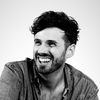With so much happening in each episode of hit BBC drama ‘Bodyguard’, it’s easy to take for granted the minute details that members of production spend ages pouring over.
But luckily one of the show’s team has given us a closer look at the prop work, providing a fascinating insight into the lengths they went to in order to bring the police drama to life.
Matthew Clark, who was a graphic designer on the show, has given a breakdown on Twitter of some of his team’s work, which reveals how legitimate bomb reports are written, websites are built from scratch and powerpoint presentations are brimming with detail.
Paperwork makes up the majority of Matthew’s on-screen work...
As you can imagine, there are lots of police reports that need to be painstakingly created and Matthew says “everything is based on reality”.
Recreating websites - like a Google results page for a fictional character - is not as easy as you might think
“All of the webpages have to be created from scratch in order to be fully controllable and interactive,” Matthew explains.
Matthew also had to design a whole app for the kompromat on Julia’s tablet
This was accompanied by some old files that contrasted the high-tech of the tablet.
All of the screens in the control room all had to be specially created
While many of these were central to the action, others were not, but still had to be created in order to fill the room.
CCTV, crime scene pictures and mug shots all had to be captured around the show’s shooting schedule
This proved to be a bit of a headache for Matthew and his team, who had to do a lot of their work around things that were happening on set.
Richard Madden had to learn to use the software Matthew and his team created
No, he didn’t just pretend.
And of course, no police drama would be complete without a fictional police crest
Read Matthew’s full Twitter thread here.
‘Bodyguard’ concludes on Sunday at 9pm on BBC One.
CORRECTION: A previous version of this story quoted a tweet from Matthew that said they got David Cameron to pose for a photo with Keeley Hawes’s Julia Montague and “photoshopped him in to match her, rather than the other way around”. However, he has since insisted this was a joke, while Cameron’s press office have also pointed people in the direction of the original photo of the former PM, which shows him with NATO Secretary General Anders Fogh Rasmussen and Denmark’s Prime Minister Helle Thorning-Schmidt.
